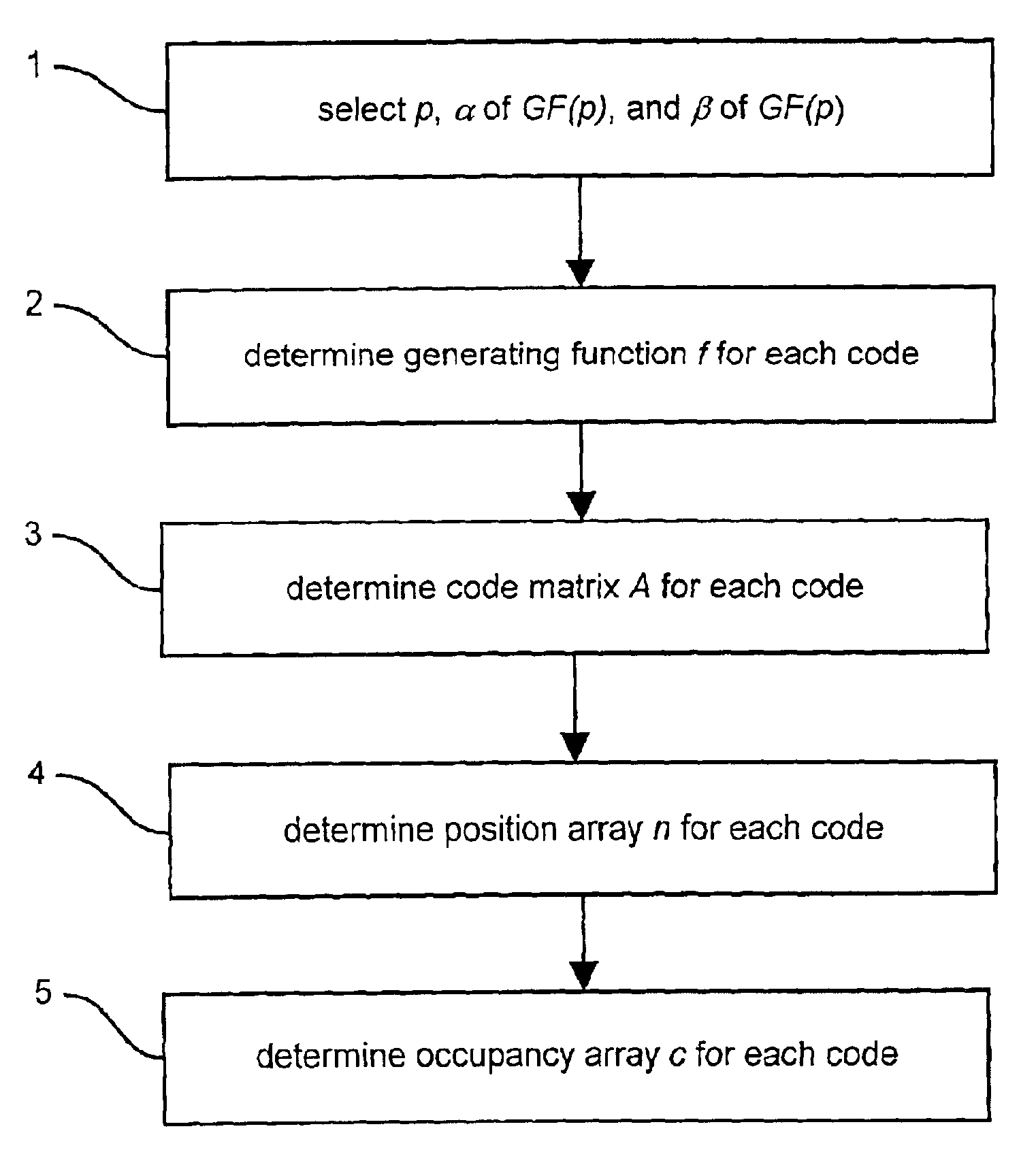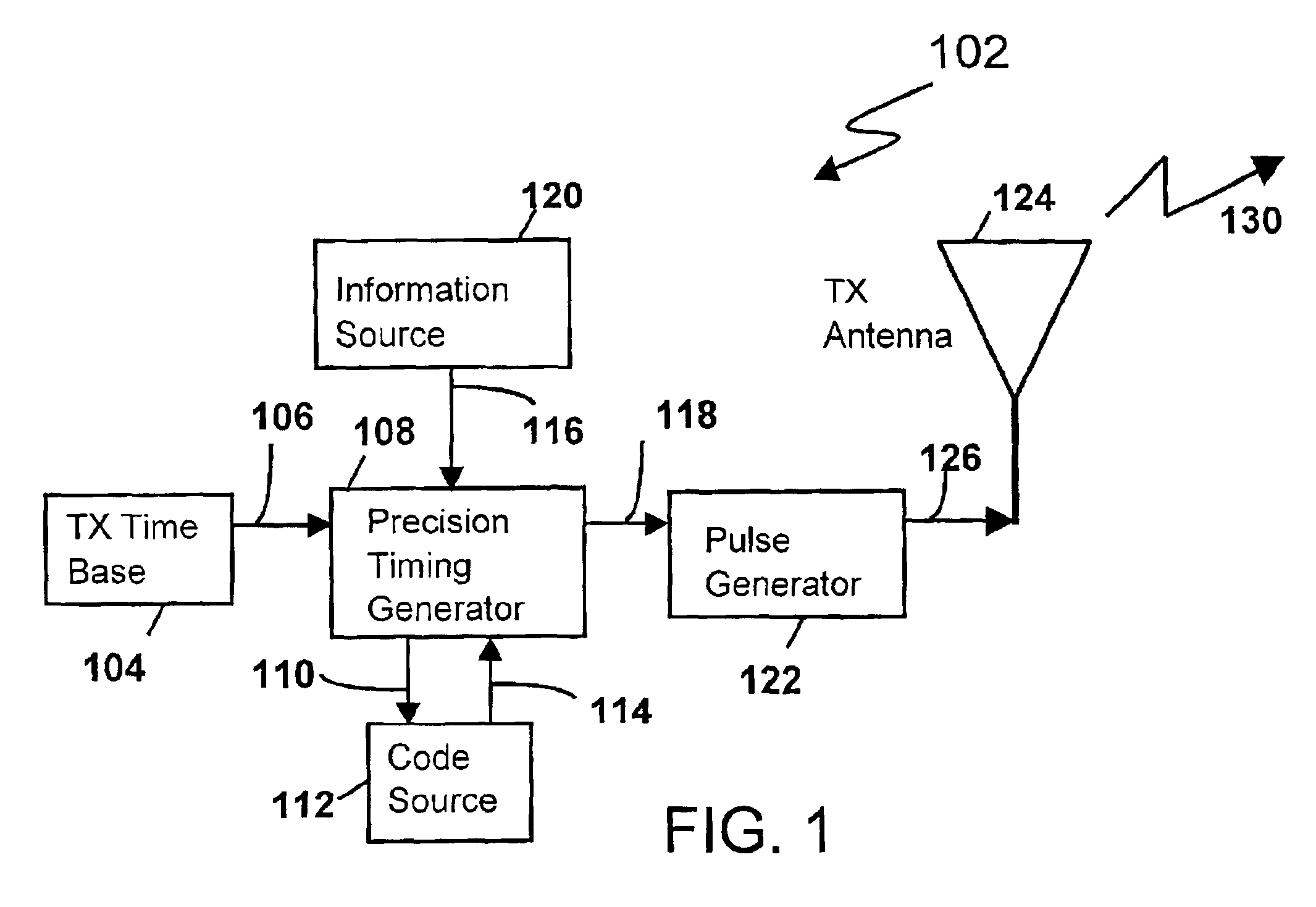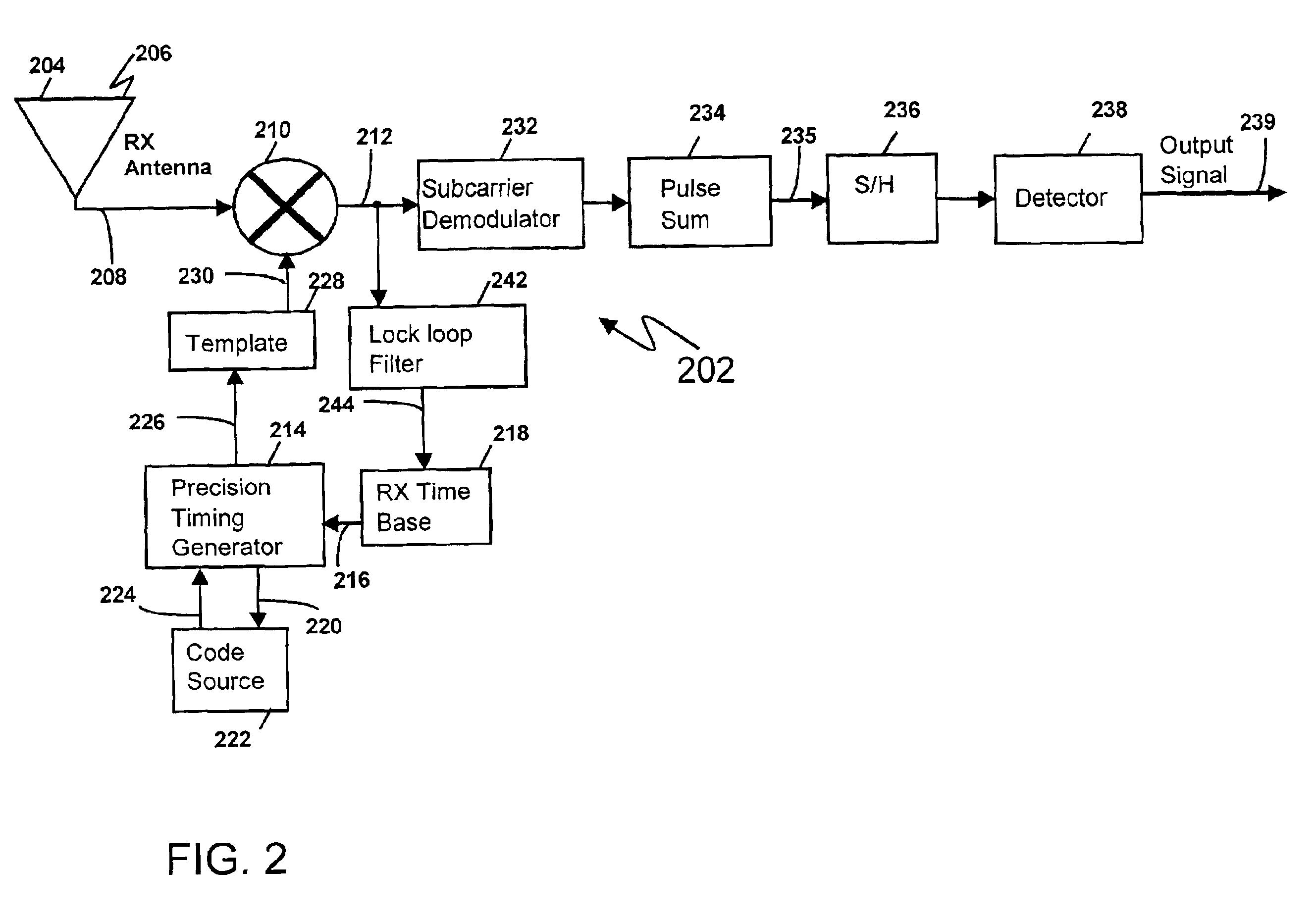Method and apparatus for generating a large number of codes having desirable correlation properties
a technology of correlation properties and codes, applied in the direction of multi-component code generation, electrical apparatus, multiplex communication, etc., can solve the problems of less suitable spectral properties, correlation properties, and the tendency to produce a limited number of codes having desirable correlation properties
- Summary
- Abstract
- Description
- Claims
- Application Information
AI Technical Summary
Benefits of technology
Problems solved by technology
Method used
Image
Examples
example 1
[0127]For block 1, select p=5, α=2 of GF(5), and β=3 of GF(5), verifying the primitivity of α and β.
[0128]For block 2, the following generating functions are defined:
f(0)(x)=mod5(x2+x)
f(1)(x)=mod5(x2+x+1)
f(2)(x)=mod5(x2+x+2)
f(3)(x)=mod5(x2+x+3)
f(4)(x)=mod5(x2+x+4)
f(5)(x)=mod5(x+1).
[0129]For block 3, a matrix A(k) is determined for each code k in the code family, where 0≦k≦5. Each matrix A(k) is based on the corresponding generating function f(k). FIG. 12 illustrates the code matrix A(k) for each code k in the code family. The values in the row above each matrix A(k) are the values of powers of α modulo 5 (i.e., mod5 (αj) for 0≦j≦3), and the column of values to the left of each matrix A(k) are the values of powers of β modulo 5 (i.e., mod5(βi) for 0≦i≦3).
[0130]For block 4, a position array P(k) is determined for each code k in the code family. For example, for code 0 and code 1, the position arrays are:
P(0)=[0, 0, 0, 3, 4, 0, 0, 0, 0, 0, 0, 0, 0, 0, 15]
P(1)=[0, 1, 0, 0, 0, 0, 0, 7, ...
example 2
[0132]In Example 2, a larger code cycle is generated than in Example 1. For block 1, the following are selected: p=29, which results in a Galois field GF(29) having 12 primitive elements; α=21 of GF(29); and β=27 of GF(29) are chosen and verified to be primitive.
[0133]As per block 2, 30 generating functions may be defined. However, since the generation of only two codes is desired, generating functions for code 17 and code 26, which were selected arbitrarily for this example to illustrate control over the number of codes generated, are defined as follows:
f(17)(x)=mod29(x2+x+17)
f(26)(x)=mod29(x2+x+26).
[0134]After performing blocks 3 through 5, the occupancy arrays are generated for code 17 and code 26. The code cycle for each code has 28 (=p−1) components and 784 (=(p−1)2=(28)2) subcomponents, and each code has between 26 (=p−3) and 28 (=p−1) components containing signal portions within a subcomponent and between 0 and 2 components without a signal present. The occupancy arrays C(17)...
example 3
[0137]In Example 3, a slightly smaller code cycle than that of Example 2 is generated. As per block 1, the following are selected: p=23; α=19 of GF(23) and β=11 of GF(23), and 19 and 11 are verified as primitive in GF(23). Applying blocks 2 through 5, occupancy arrays C are generated for the 24 codes of the code family as shown in FIG. 15. Each row in FIG. 15 corresponds to one of the codes. The code cycle for each code has 484 (=(p−1)2=(22)2) subcomponents, and each code has either 20, 21 or 22 (p−3, p−2, or p−1) components containing signals within a subcomponent. FIG. 15 also illustrates the code compression aspect of the current invention, where several of the 24 codes of the code family can be seen to be shorter than the others due to the occupancy array method of representing them.
[0138]FIG. 16 illustrates the maximum correlation values between the 24 codes in the code family. The code values are illustrated in the form of a 24×24 matrix. The elements on the main diagonal of t...
PUM
 Login to View More
Login to View More Abstract
Description
Claims
Application Information
 Login to View More
Login to View More - R&D
- Intellectual Property
- Life Sciences
- Materials
- Tech Scout
- Unparalleled Data Quality
- Higher Quality Content
- 60% Fewer Hallucinations
Browse by: Latest US Patents, China's latest patents, Technical Efficacy Thesaurus, Application Domain, Technology Topic, Popular Technical Reports.
© 2025 PatSnap. All rights reserved.Legal|Privacy policy|Modern Slavery Act Transparency Statement|Sitemap|About US| Contact US: help@patsnap.com



